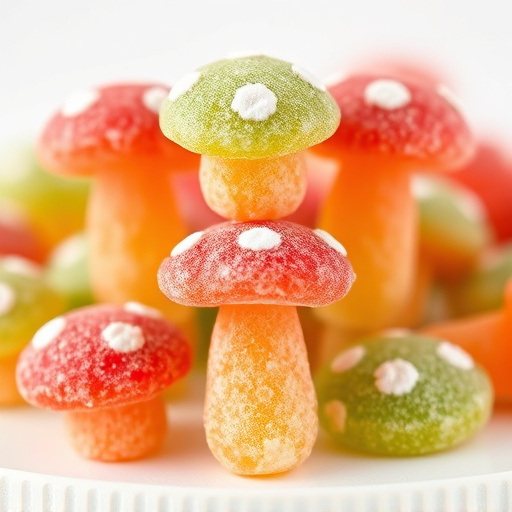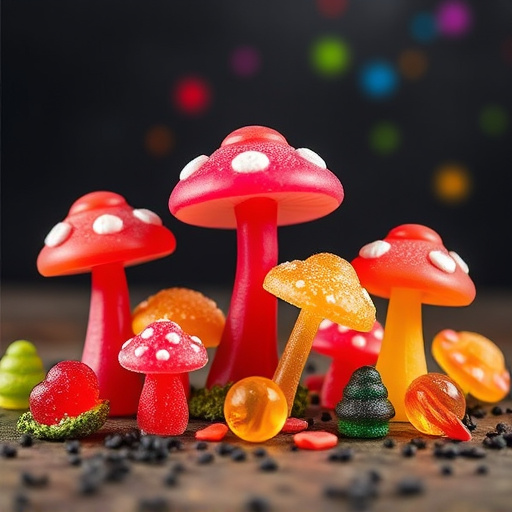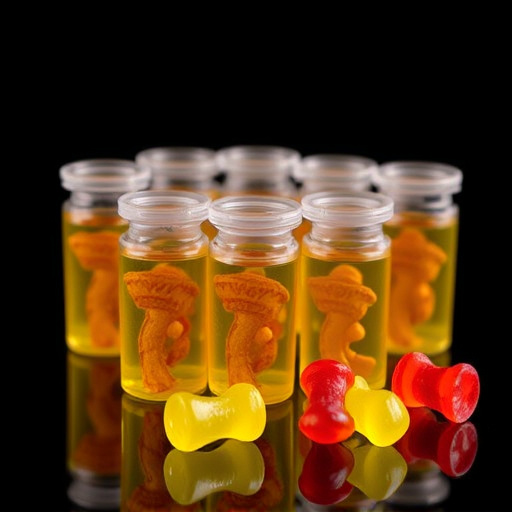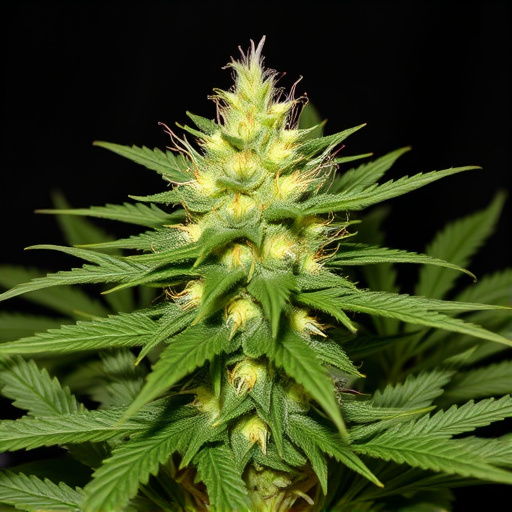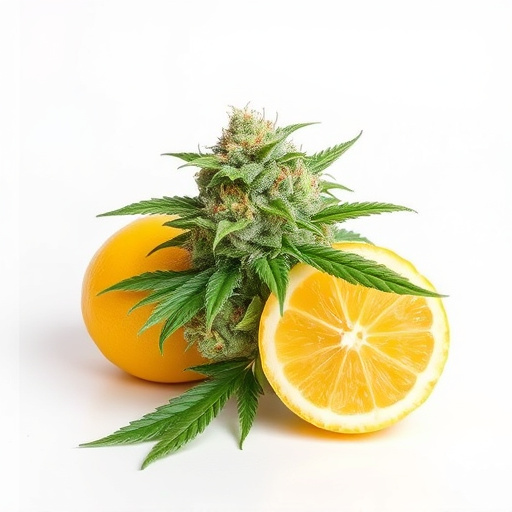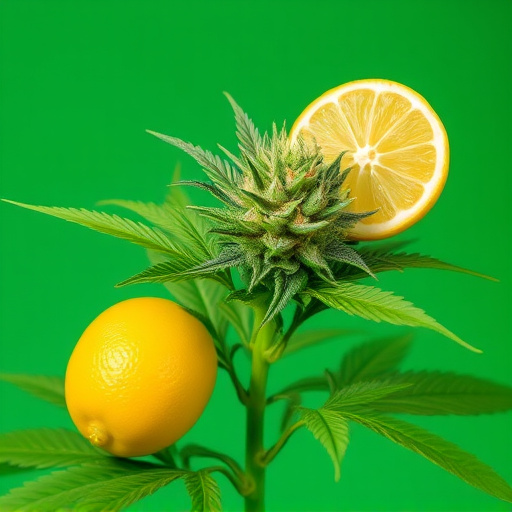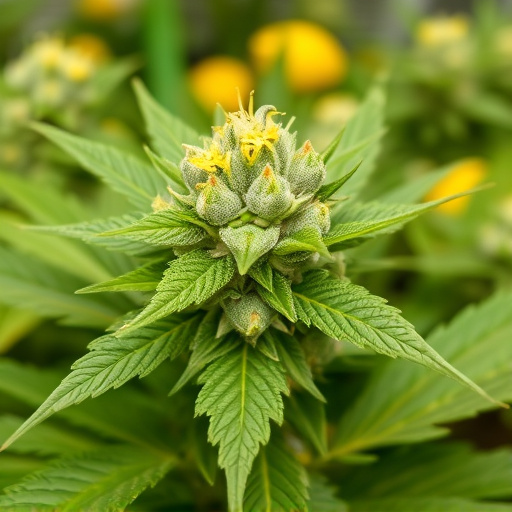Cannabis plants transform from green to vibrant colors like purple, blue, and red as they mature, driven by pigments like anthocyanins. Lemon cannabis strains are notable for their distinctive yellow hues, resulting from terpene-cannabinoid interactions and optimal environmental conditions including light balance, temperature, and humidity. These visual attributes reflect the plant's developmental stage and chemical diversity, making lemon strains popular among enthusiasts for both potency and sensory appeal.
Cannabis flowers’ vibrant hues, ranging from vivid purple to sunny yellow, are more than aesthetic. These color changes are driven by complex chemical processes and environmental influences. In this article, we explore the science behind cannabis pigmentation, uncovering the secrets of its diverse colors. From the zesty allure of lemon cannabis strains, known for their bright yellow tones, to the impact of environmental factors, each color shift tells a unique story. Unravel the mysteries of these floral transformations and discover how they enhance our understanding of this fascinating plant.
- The Science Behind Cannabis Pigmentation: Understanding the Chemical Composition
- Lemon Cannabis Strains: A Bright and Aromatic Variation
- Environmental Factors: How They Impact Flower Color Changes
The Science Behind Cannabis Pigmentation: Understanding the Chemical Composition
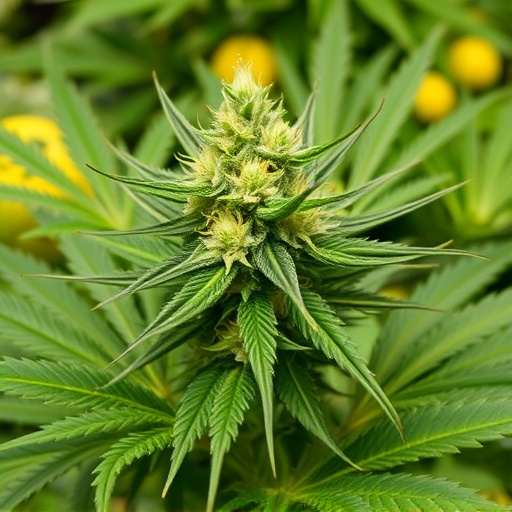
The science behind cannabis pigmentation is a fascinating aspect of this complex plant. Cannabis flowers change color as they mature, going from verdant green to shades of purple, blue, and red—a process influenced by their chemical composition. This transformation is not merely aesthetic; it signifies advancements in the plant’s development and often indicates specific cannabinoid and terpene profiles.
The pigments responsible for these colors include anthocyanins, which are present in various tissues of the cannabis plant, including leaves and flowers. These compounds are sensitive to environmental cues, like light and temperature, and their synthesis increases as the plant matures. In some strains, such as lemon cannabis varieties, the green chlorophyll breaks down, revealing other pigments, including yellow anthocyanins, giving these flowers a distinctive lemon-hued appearance. This natural process not only captivates growers and enthusiasts but also offers insights into the diverse chemical makeup of different cannabis cultivars.
Lemon Cannabis Strains: A Bright and Aromatic Variation

Lemon cannabis strains are a delightful variation known for their vibrant hues and aromatic profiles. The unique color change in these strains is attributed to a combination of natural compounds, primarily terpene and cannabinoid interactions. As cannabis flowers mature, the levels of citral, a terpene responsible for lemon’s characteristic scent, increase, contributing to the bright yellow or even green-tinged pistils—the female reproductive parts of the plant.
This color transformation isn’t just aesthetically pleasing; it also signals the plant’s readiness for harvest. Lemon strains are celebrated for their uplifting and refreshing aroma, often described as a burst of citrusy notes that fill the air with a crisp, clean scent. The interplay between this potent terpene and cannabinoids like THC or CBD creates a distinctively bright and invigorating experience, making lemon cannabis strains a favorite among enthusiasts seeking both potency and pleasant sensory experiences.
Environmental Factors: How They Impact Flower Color Changes

Cannabis flower color changes aren’t just a cosmetic phenomenon; they’re often an indicator of the plant’s health and maturity, influenced by various environmental factors. Light conditions play a significant role, with varying spectrums affecting pigment production. For example, lemon cannabis strains often display vibrant yellows due to optimal light exposure—a result of balanced red and blue light during the floral stage.
Temperature and humidity also contribute to these transformations. Cooler temperatures can delay the flowering process, allowing for more intense colors as the plant takes its time to mature. High humidity levels encourage the production of essential oils and terpenes, which not only influence aroma but can also enhance the visual appeal of the flowers, making them more vibrant and desirable, particularly in lemon cannabis strains known for their distinctive golden hues.
Cannabis flower color changes are a fascinating result of complex interactions between its chemical composition, environmental factors, and genetic makeup. As we’ve explored, understanding these variations, particularly the vibrant hues found in lemon cannabis strains, offers insights into both the plant’s health and its unique aromatic properties. Environmental influences play a significant role, with temperature, light exposure, and nutrition all contributing to the final pigmentation. By recognizing these factors, cultivators can optimize conditions to produce not only visually striking flowers but also enhance the therapeutic potential of their crops.
